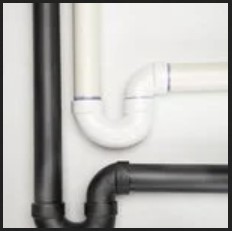
Every home requires a plumbing system that works efficiently. Like most homeowners, you have to understand everything a plumbing system contains. An emergency may occur, or you need to make simple repairs; that’s why you must know the commonly used terms.
When you hire All Day Plumbing, you can have an interesting conversation when knowing the commonly used plumbing terms. In this article, we shall cover commonly used words.
Let’s get started:
- PEX Tubing
There are many water pipes. However, copper and galvanized steel pipes are commonly used because they are durable and can last long. PEX, on the other hand, is a cross-linked polyethylene water pipe, expected to be material for the future.
The pipe is easy to bed and easy to assemble. It comes in different colors – blue and red – which allow you to differentiate between hot and cold water pipes. In addition, PEX is cheaper than copper.
Today, PEX is a great choice of material plumbers should be using. All Day Plumbing will use the material of piping you choose. In an emergency, you need to contact a company offering 7 days plumbing services.
- Vent Stack
Vent stack refers to the main vent pipe used to connect the sewer to the roof. When you look at every house or building, you will see a 2-3 inch pipe rising and resembles a miniature smokestack.
All branch vents in the building will connect to this drain. Like a smokestack, the main role of the vent stack is to dissipate harmful gases and allow air inside the pipes.
When there is no source of air that will equalize the pressure, negative pressure slows down the flow of liquids via the pipes. If the drains run slowly or the toilet does not flush properly, you may suspect a blockage. However, the problem could result from the obstructed vent stack.
- Plumbing Trap
When a pool of water collects in a pipe, it forms a plumbing trap with “S” standing and “P” shape inverted. According to plumbing codes, all drain needs to have a trap, whereas most plumbers prefer P-shaped traps. When the water collects via the inverted “P,” the water will seal the drain.
The traps are essential because they will catch solid objects and prevent clogging the drain line.
- Sweat Connection
This is the process used to join copper pipes fittings. It is a procedure that involves a soft metal alloy and solder. The plumber will melt the soft metal alloy with a torch.
After coating the pipe, the plumber will fit with the flux to join them, heat the joint, and metal will glow. The solder will melt, wick in between the gap, and solidify after removing the heat. The results of the joint will be a watertight connection.
Conclusion
If you have a plumbing system at home, you need to get used to the most common terms. It will be easy when dealing with a plumbing company. Nonetheless, always hire a reliable company for repair services.